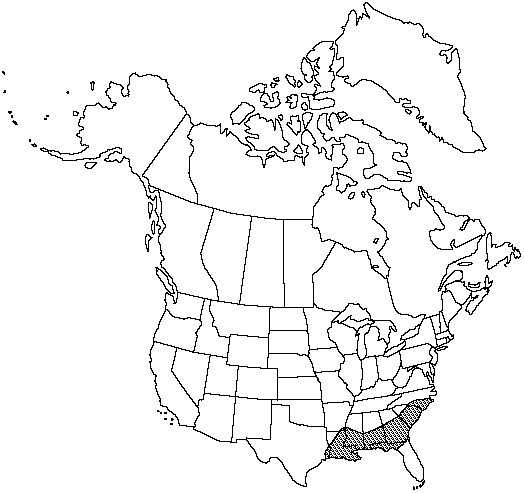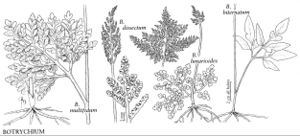Botrychium lunarioides
Syn. Fil. 172. 1806.
Trophophore stalk 0.1–1 cm; blades usually pale green, plane, 2–3-pinnate, to 8 × 12 cm, often much smaller, fleshy. Pinnae to 5 pairs, usually well separated, horizontal, distance between 1st and 2d pinnae not or slightly more than between 2d and 3d pairs, divided to tip. Pinnules fan-shaped, margins denticulate, apex rounded, venation like ribs of fan, midrib absent. Sporophores 2-pinnate, 1–2 times length of trophophores. 2n =90.
Phenology: Leaves appearing in late fall and dying in early spring.
Habitat: In open grassy places in prairies, cemeteries, and weedy roadsides
Elevation: 0–250 m
Distribution

Ala., Ark., Fla., Ga., La., Miss., N.C., S.C., Tex.
Discussion
The stalk and proximal part of rachis of Botrychium lunarioides contains huge tracheidal idioblasts with annular thickenings, visible in cleared leaves (H.J. Arnott 1960). Another peculiarity of this species is the tendency for the sporophores to remain curled in late fall and early winter and to become erect in February. Botrychium lunarioides is often associated with Schizachyrium scoparius Michaux and Ophioglossum crotalophoroides Walter. The name B. biternatum was misapplied by L.Underwood to B. lunarioides.
Selected References
None.
